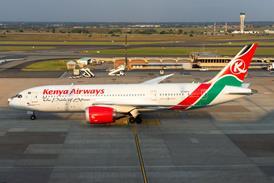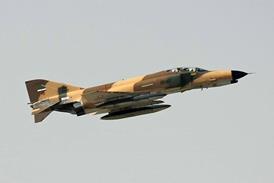Forbes Mutch/LONDON
After several years of stagnation, even of decline, the corporate-aircraft market, hardest hit of all aerospace sectors during the recession, has at last shown signs of movement.
According to figures published by AvData at the end of 1994, the world fleet of business aircraft stood at 16,465, a modest 1% improvement on the previous year. For the first time, the number of business jets exceeded turboprops, with 8,290 units against 8,175. In terms of sales, 272 new jets and fewer than 160 turbo-props, entered the market in 1994.
The figures reflect a shift in the sales structure for jet aircraft and a manufacturing trend to produce light turbofan aircraft which offer jet efficiency at roughly the same price as that of the higher-end turboprops.
Cessna and Gulfstream each reported record business-jet sales for the year, with Cessna posting figures of 121 jets sold, against 116 in 1993. Cessna also took orders for 203 aircraft, its highest order intake since its all-time-record year of 1979. Gulfstream says that its dollar sales in 1994 were the highest in its history, with orders for 40 Gulfstream IV and V business jets.
The story in Europe is less cheerful. With Raytheon now planning to transfer production of the Hawker 800 and Hawker 1000 lines from its UK centres at Chester and Hatfield to Wichita, Kansas, the manufacture of purpose-built business jets in Europe has become virtually the sole prerogative of Dassault Aviation of France.
With this low manufacturing base, and with Europe's share of the user market now down to less than 20% of the world fleet (at 969 business jets), it is perhaps surprising that there will be such a strong showing of corporate aircraft at Le Bourget this year.
The Paris show is home territory for Dassault, which will be displaying a full set of its products in this range. The Falcon 900EX, launched in October 1994, was due to have its first flight before the end of May and is included in the exhibition's flying display. Dassault claims more than 40 orders for the aircraft, which is expected to be certificated by March 1996. The manufacturer says that it anticipates total sales of around 100 for the aircraft. The Falcon 900B, predecessor to the EX, will also be on display.
The success of the EX concept has encouraged Dassault to develop an extended-range version of its Falcon 50. Dubbed the Falcon 50EX, the aircraft will be powered by three AlliedSignal TFE731-40s, which will give it 24% more cruise thrust at 40,000ft (12,200m), with a 7% improvement in specific fuel consumption, than the existing TFE731-3 power plants. Dassault vice-president Jean Rosanvallon says that performance, rather than range, will be its biggest advantage over the standard Falcon 50.
One of the main talking points in the Dassault chalet will be the progress of its plans to develop a successor to the Falcon 20, which is now out of production (although on display at the show). Falcon programme manager Olivier Villa says that the company aims to produce "...something that will eventually feed into the entire range of Dassault business aircraft". The company is turning its attention more and more to corporate products in the face of declining military sales.
In competition with the Falcon 900EX, US manufacturer Gulfstream will be talking about its plans for the Gulfstream GIV. The company has stated that it intends to continue production of the aircraft for the "foreseeable future", but its long-term plans are thought to be to end production in favour of a proposed longer-range Gulfstream IV-B. A study has been conducted into developing the range by 740km (400nm) to take it to 8,510km. The Falcon 900EX is also expected to have a range of 8,500km.
In the ultra-long-range business-jet market, the competition is between Gulfstream, with its GV, and Bombardier, with the Global Express. The battle between the two companies heated up in March when Bryan Moss, president of Bombardier's business-aircraft division, defected to the opposite camp to become chief executive of Gulfstream Aircraft.
Moss was closely associated with the promotion of the Global Express, and Bombardier moved very quickly to limit the damage likely to be caused to its market position by his departure. Former vice-president for marketing and sales John Lawson was promoted to fill the gap and has stated that key Global Express customers have not wavered from the programme. "It is business as usual," he says.
Bombardier will be showing a mock-up of the Global Express at Paris. The company vigorously denies as "vicious rumour" the suggestion that the programme is about to be cancelled.
Gulfstream will be promoting the GV, which is scheduled to have its first flight on 15 November. First deliveries are expected to begin in November 1996, and the manufacturer claims 50 firm sales so far.
Also at the show, in mock-up form, will be Bombardier's Learjet 45 mid-range business jet. The aircraft was expected to have its first flight in April, but the programme, being conducted by Bombardier divisions Canadair of Toronto, Short Brothers of Belfast and Learjet of Wichita, is now behind schedule. A fifth aircraft may be added to the flight-test programme to help catch up and to ensure that the December 1996 deadline for certification is met. Although he admits that the time frame for assembly of the first aircraft has slipped, programme manager Andr, Brais is confident that the company will meet its promise to deliver eight units to customers by the end of January 1997.
There is a strong showing from the Israelis at Le bourget this year, with Israel Aircraft Industries (IAI) displaying its Astra business jet, the Astra SPX and a mock-up of the four- to six-passenger Galaxy business jet.
The Galaxy is due to be certificated in late 1996, but the programme has been facing financial problems with factions of the Israeli Government opposing more investment in executive-jet production at IAI. The company has been negotiating - so far without success - with US and European manufacturers, to find a production partner for the aircraft. IAI president Moshe Keret says that he is looking for "...a business partner for strategic reasons to widen IAI's basis in executive-jet production".
The programme already involves Russian design bureau Yakovlev, which is involved in development work. According to the agreement, it will build the fuselage and empennage at the Saratov production plant. In spite of that, investment in series production by a Western company is now considered vital.
Underlining its recent success, Cessna will have a strong presence at the show, with its display being spearheaded by the new Citation X business jet. Certification of the high-speed aircraft has been pushed back from August to November, but first customer deliveries are still expected to be made by early December. The Allison AE3007C-powered type is expected to be the fastest business jet on the market, with a cruise speed of Mach 0.9.
Cessna is also expected to be displaying its Citationjet, Citation V Ultra and a mock-up of the new Citation Excel.
Raytheon Aircraft claimed pole position in business-aircraft sales in 1994 following consolidation of Beech Aircraft and Raytheon Corporate Jets. The company says that it delivered 361 aircraft during the year, including 133 business jets and turboprops.
At Paris, Raytheon will be showing the ever-popular Beech King Air 350, the Beech Jet 400A and both the Hawker 800 and Hawker 1000 business jets. The Hawker 800 was relaunched as the 800XP in March and, although selling at the same $9.9 million price, now has upgraded AlliedSignal TFE731-5BR engines. It is expected to be available by the end of 1995.
Source: Flight International




















